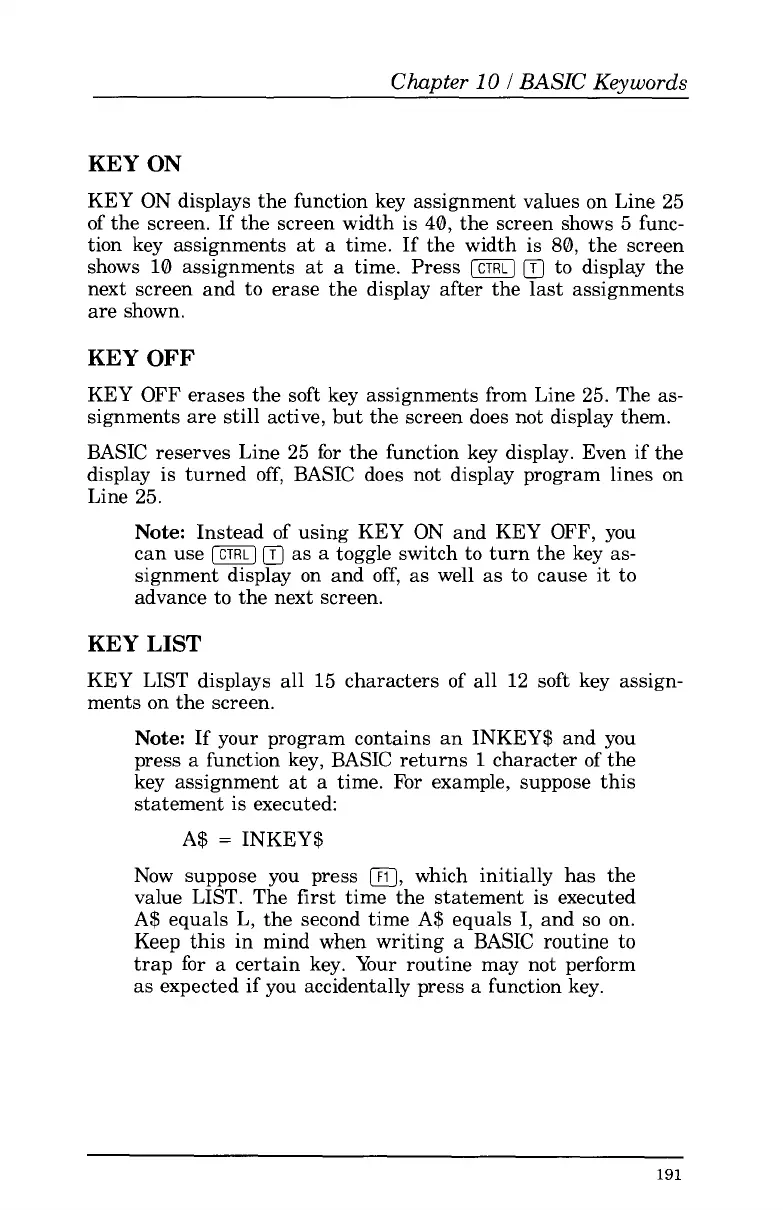Chapter
10
I
BASIC
Keywords
KEY
ON
KEY
ON
displays the function key assignment values on Line
25
of
the screen. If the screen width is 40, the screen shows
5
func-
tion key assignments
at
a
time. If the width is 80, the screen
shows 10 assignments at
a
time. Press
(CTRL]
p)
to
display the
next screen and
to
erase the display after the last assignments
are shown.
KEY
OFF
KEY OFF erases the soft key assignments from Line
25.
The as-
signments are still active, but the screen does not display them.
BASIC reserves Line
25
for the function key display. Even if the
display is turned off, BASIC does not display program lines on
Line
25.
Note:
Instead of using KEY ON and KEY
OFF,
you
can use
[m]
[TJ
as a toggle switch
to
turn the key as-
signment display on and off, as well as
to
cause it
to
advance
to
the next screen.
KEY
LIST
KEY LIST displays all 15 characters
of
all
12
soft
key assign-
ments on the screen.
Note:
If your program contains an INKEY$ and you
press a function key, BASIC returns
1
character of the
key assignment at
a
time.
For
example, suppose this
st at ement is executed:
A$
=
INKEY$
Now suppose you press
I,
which initially has the
value LIST. The first time the statement
is
executed
A$ equals L, the second time A$ equals I, and
so
on.
Keep this in mind when writing
a
BASIC routine
to
trap for a certain key. Your routine may not perform
as expected
if
you accidentally press a function key.
191
